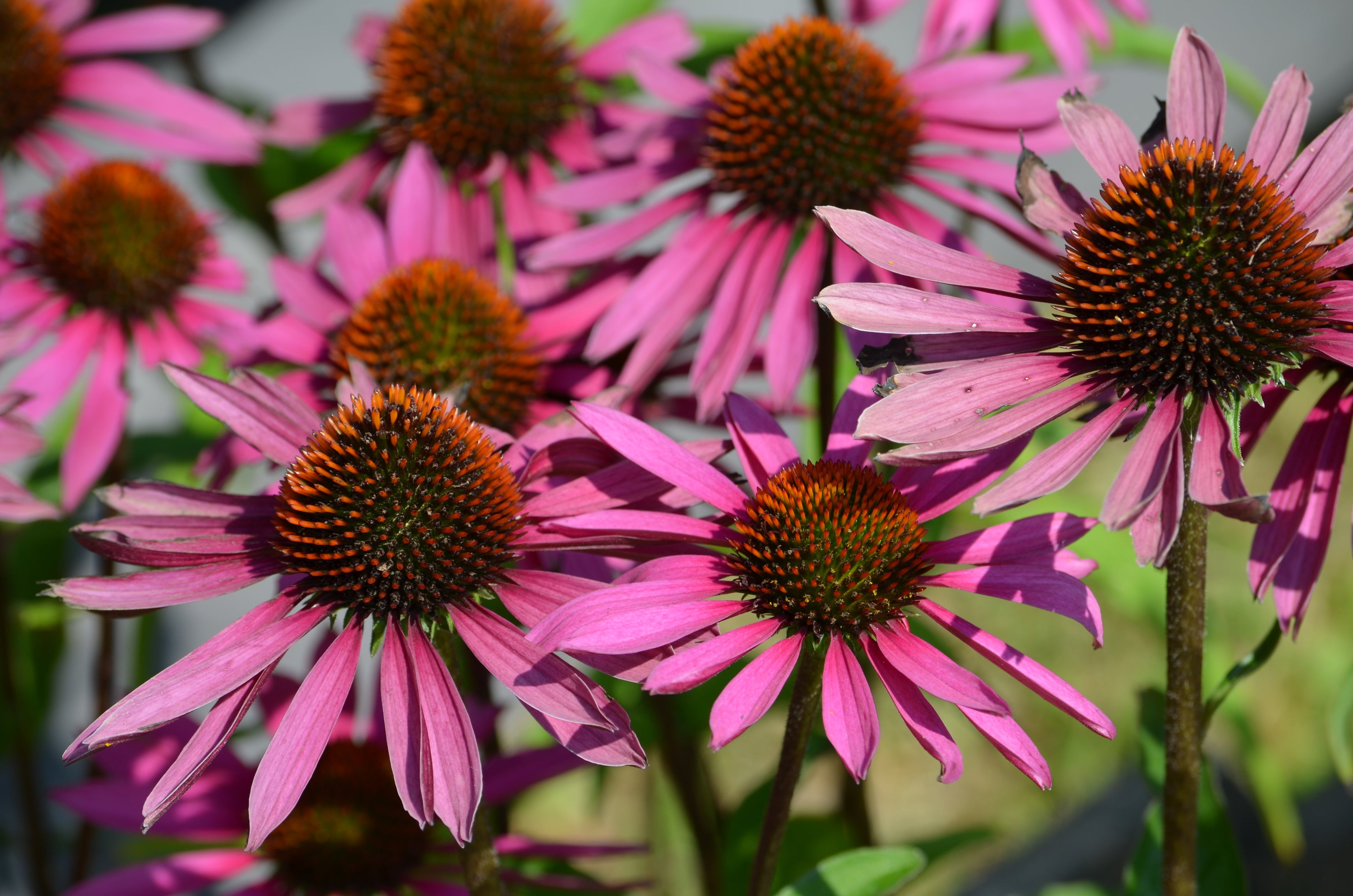

Occupied all around with yellow ray flowers. They haveĪ brown flower basket with diameters up to 4.5 cm (1.8 in), which is FloweringĮchinacea species takes place between early July to early September.Ĭoneflower species are easily recognized by their flowers. The leaves are mostly petiolate on the dark green to brownish stems. Often there are three or five leaf nerves on the top of the leaf. The leaf surface of most species are hairy with a rough texture. Its length is usually between 10 and 20 cm (4 and 8 in). The leaves are always lanceolate and show a smooth, sometimes even slightly crenate leaf margin. All species are perennial and anchored in the ground with a deep tap root. The coneflower, depending on the species and growing conditions, grows between 30 and 140 cm high (12 and 55 in). Yellow coneflower, Bush’s purple coneflower – Echinacea paradoxa.Wavyleaf purple coneflower – Echinacea simulata.Topeka purple coneflower – Echinacea atrorubenswer.Tennessee coneflower – Echinacea tennesseensis.Smooth coneflower, smooth purple coneflower – Echinacea laevigata.Sanguine purple coneflower – Echinacea sanguinea.Purple coneflower, eastern purple coneflower – Echinacea purpurea.Pale purple coneflower – Echinacea pallida.Narrow-leaved purple coneflower – Echinacea serotina.Narrow-leaf coneflower – Echinacea angustifolia.The most important, however, are the following: There are more than 40 species of coneflowers worldwide. All species of the genus are therefore directly related to important medicinal plants such as the alant, the coltsfoot or the dandelion. Plant orderĬoneflowers (Echinacea) form a separate genus and belong to the daisy family. Such as the purple coneflower often can be found in some gardens. Plant, the coneflower was introduced to Europe. Medical interest of the plants and the suitability as an ornamental Of locations, from wet meadows to dry prairies. Use as aromatic herb: no use Plant characteristics and classification ofĬoneflower are native to North America. Strengthening of the immune system, flu infections, inflammation of Purple coneflower, blacksamson echinacea, pale purple coneflower Many gardeners also like to cultivate the purple coneflower or the narrow-leaved coneflower as ornamental shrubs because of its magnificent flowers.Įchinacea angustifolia, Echinacea pallidaĬoneflower, hedgehog coneflower, purple coneflower, narrow-leaved However, as a medicinal plant, coneflower can also fight some fungi and effectively fight inflammation.

The herb was known for its ability to strengthen the immune system and ward off infections in advance. Buy Coneflower – What to pay attention to?Ĭoneflower, also known as echinacea, is a relatively young medicinal plant.Side effects and application restrictions.Plant characteristics and classification of.


 0 kommentar(er)
0 kommentar(er)
